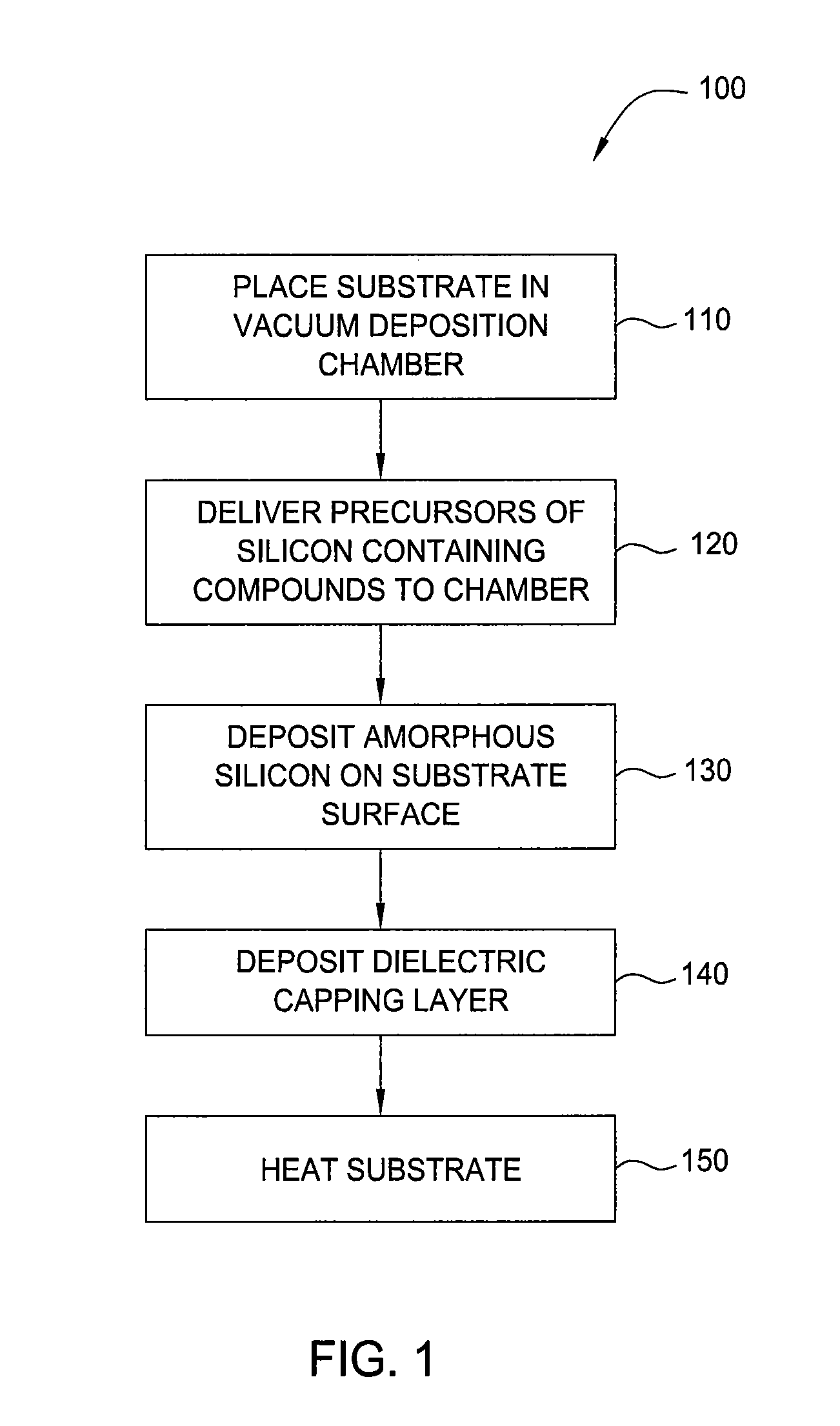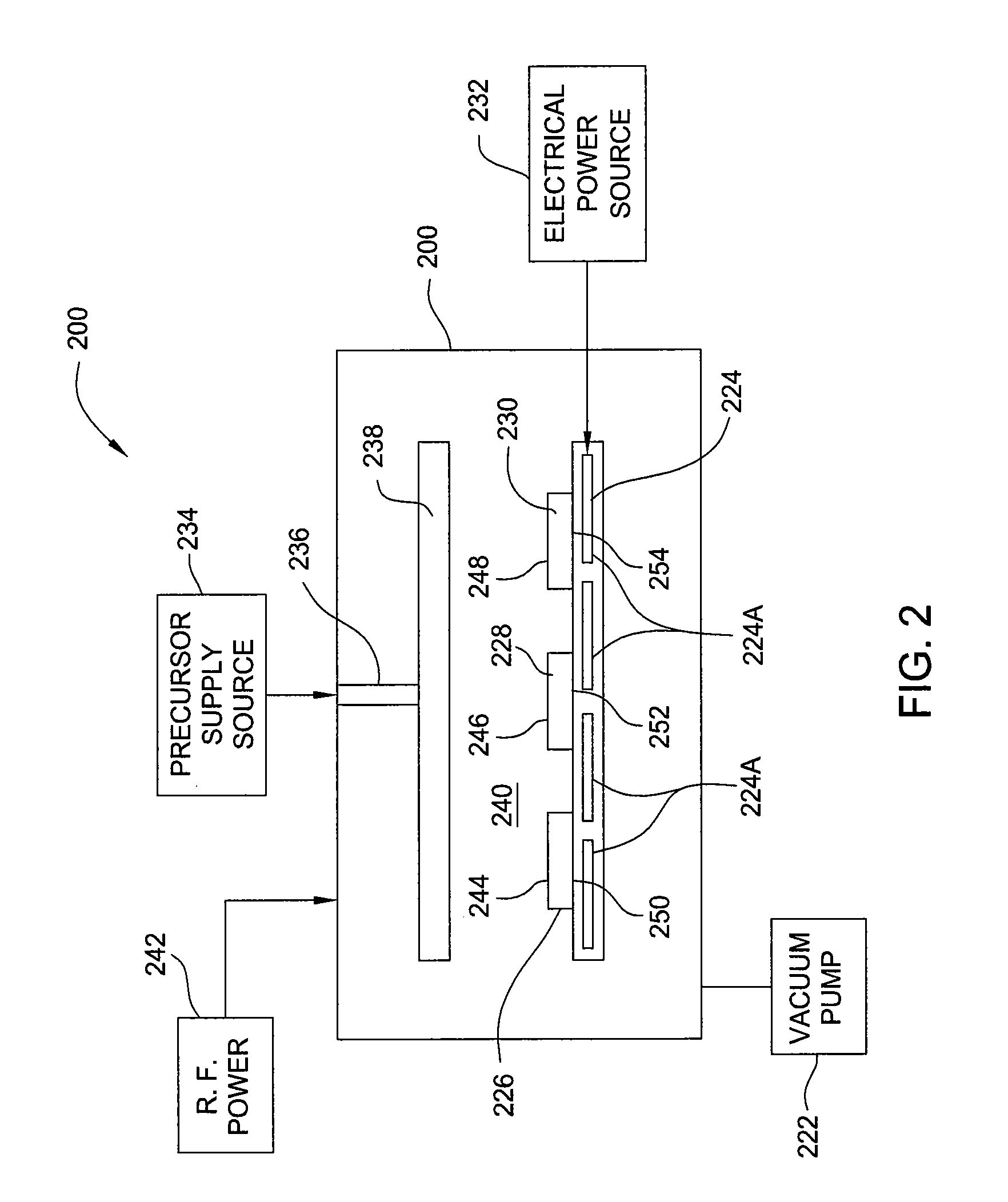Directional solid phase crystallization of thin amorphous silicon for solar cell applications
a technology of solar cells and solid phase crystallization, which is applied in the direction of crystal growth process, sustainable manufacturing/processing, final product manufacturing, etc., can solve the problems of high surface recombination velocity of minority charge carriers, and process complexity. complex gaseous diffusion process
- Summary
- Abstract
- Description
- Claims
- Application Information
AI Technical Summary
Benefits of technology
Problems solved by technology
Method used
Image
Examples
example 1
[0048]In one example, a 100 Å thick amorphous silicon film was deposited via plasma enhanced chemical vapor deposition onto a crystalline silicon substrate with a phosphorous doping concentration of 1.5×1021 atoms / cm3. A 900 Å thick silicon nitride film was then deposited over the phosphorous doped amorphous silicon film in the same chamber. The resulting structure was annealed via RTP at 950° C. for 120 seconds in a nitrogen environment. The phosphorous concentration in contact with the silicon nitride layer remained heavily doped. The phosphorous in contact with the crystalline substrate diffused into the substrate resulting in a p-n junction depth of 900 Å. The resulting structure had a dopant profile with a high concentration of dopant collected at the interface between the silicon, nitride layer and the silicon layer decreasing to a lower concentration of dopant at the p-n junction.
example 2
[0049]In another example, a 100 Å thick amorphous silicon film was deposited via plasma enhanced chemical vapor deposition onto a crystalline silicon substrate with a phosphorous doping concentration of 1.5×1021 atoms / cm3. A 900 Å thick silicon nitride film was then deposited over the phosphorous doped amorphous silicon film in the same chamber. The resulting structure was annealed via RTP at 1,000° C. for 120 seconds in a nitrogen environment. The phosphorous concentration in contact with the silicon nitride layer remained heavily doped. The phosphorous in contact with the crystalline substrate diffused into the substrate resulting in a p-n junction depth of 1,350 Å. The resulting structure had a dopant profile with a high concentration of dopant collected at the interface between the silicon nitride layer and the silicon layer decreasing to a lower concentration of dopant at the p-n junction.
[0050]Although the invention has been described in accordance with certain embodiments and...
PUM
| Property | Measurement | Unit |
|---|---|---|
| concentration | aaaaa | aaaaa |
| temperature | aaaaa | aaaaa |
| temperature | aaaaa | aaaaa |
Abstract
Description
Claims
Application Information
 Login to View More
Login to View More - R&D
- Intellectual Property
- Life Sciences
- Materials
- Tech Scout
- Unparalleled Data Quality
- Higher Quality Content
- 60% Fewer Hallucinations
Browse by: Latest US Patents, China's latest patents, Technical Efficacy Thesaurus, Application Domain, Technology Topic, Popular Technical Reports.
© 2025 PatSnap. All rights reserved.Legal|Privacy policy|Modern Slavery Act Transparency Statement|Sitemap|About US| Contact US: help@patsnap.com



